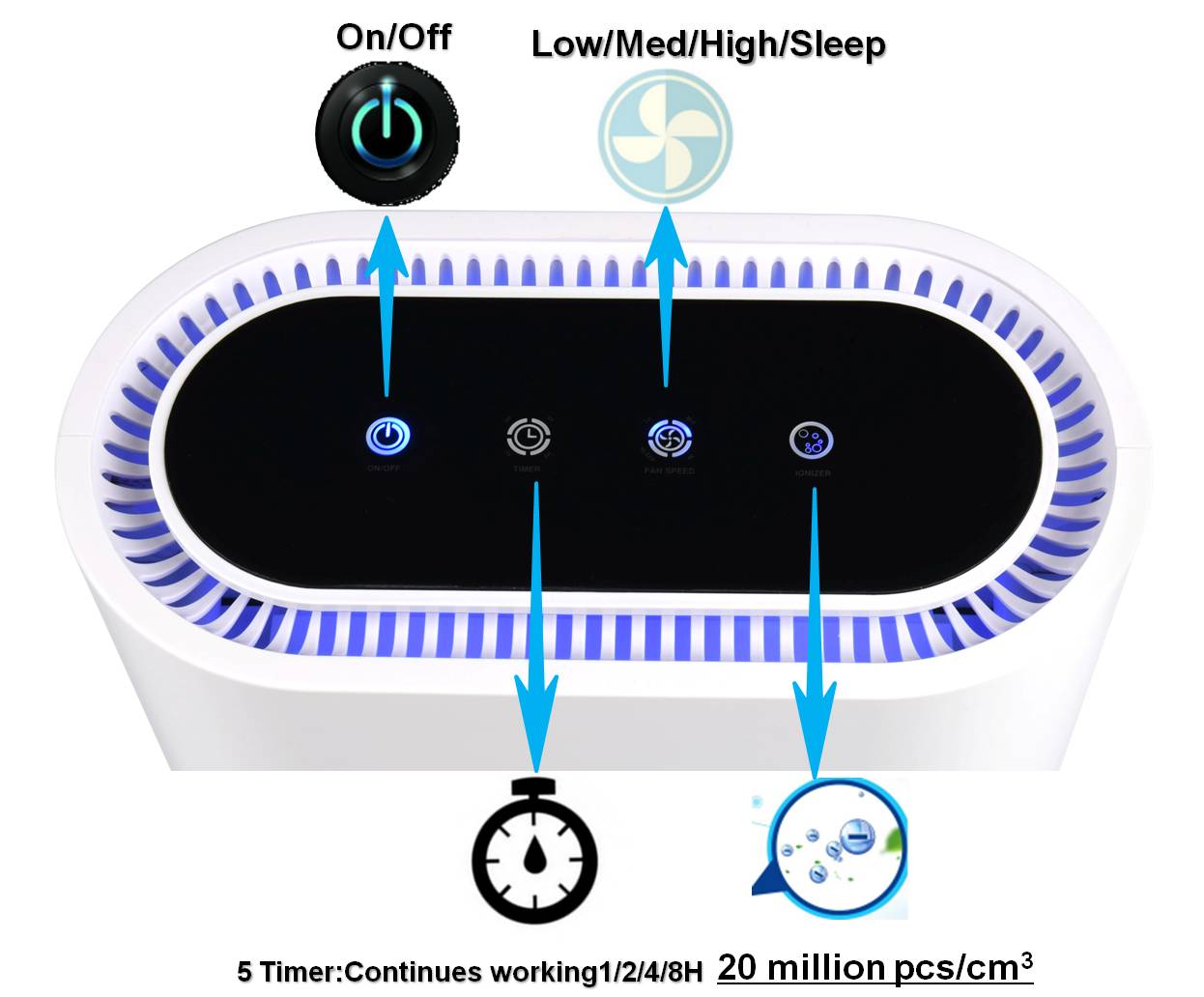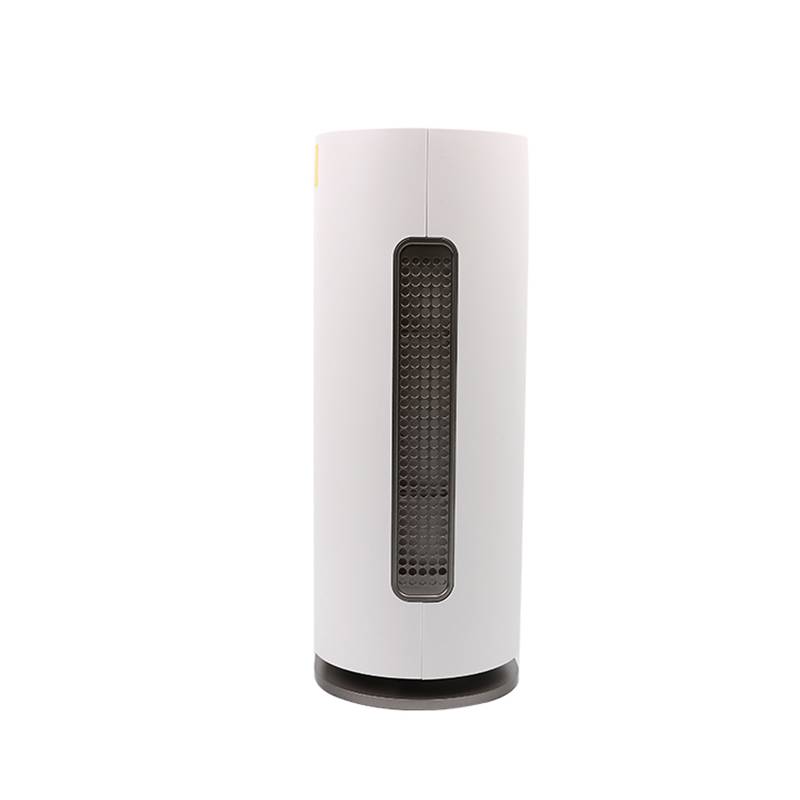The Washington Post is providing this news free to all readers as a public service.
Follow this story and more by signing up for national breaking news email alerts. Non Ozone Air Purifiers

Covid is not going away for the foreseeable future. Vaccination, rapid tests and appropriate masking are important ways to protect against getting sick and spreading the virus.
So is better indoor air quality.
As we enter Year 4 of this pandemic, with new variants popping up, I want to be able to gather more often — and safely — with family and friends. I want to host regular dinners featuring sour cherry pie, like the one I made for fellow health reporters after we had been working remotely — pretty much around-the-clock — for more than a year.
And I want to feel safe at work, where, like most reporters, I don’t have my own office. I can’t just close the door to keep out colleagues’ germs. Or open windows for fresh air.
So, as someone who likes to seize control of seemingly uncontrollable situations, I resolved to build my own DIY portable air cleaner.
Generating cleaner indoor air at home and at work reduces everybody’s risk of being sickened by airborne pathogens such those that cause covid-19 and the flu.
While I’m pretty good at following recipes, I don’t have a lot of confidence in my ability to build stuff from scratch. Not even with Legos when my son was little. Forget about Ikea furniture.
But I decided to give this Corsi-Rosenthal Box a try because we would be gathering with lots of loved ones heading into the new year.
I am not handy but I did build this DIY air filter (aka Corsi-Rosenthal box). LOTS of duct tape… but cleaner air!! pic.twitter.com/L2HqkGOx61
The Corsi-Rosenthal Box is named for its two inventors, who were looking for a cost-effective way to build something that performs the same functions as costlier air-purification devices. They came up with the idea in August 2020, five months into the coronavirus pandemic.
Richard Corsi, the dean of the College of Engineering at the University of California at Davis, and Jim Rosenthal, the chief executive of Tex-Air Filters, teamed up to create the easy-to-assemble, inexpensive air cleaner using materials found at hardware stores or online. The box uses four common household air filters for the sides — the kind you use for a home HVAC system — a 20-inch fan on top, cardboard, scissors, and duct tape to hold it all together.
It’s important to get the right kind of filters. The filters need to have a MERV-13 rating, which refers to the filter’s ability to trap particles of a specific size.
When the fan is turned on, air is pulled through the four sides of the box. The filters trap contaminated particles, allowing clean air to flow into the middle of the box and be pushed back out into the environment through the fan. The fan just needs to be plugged into a normal electrical outlet. Not only can the boxes reduce the spread of pathogens such as the coronavirus, they also can reduce other particles, such as those generated by wildfires, as well as dust and pollen.
The box removes all kinds of other pollutants, like “allergens, tiny particles created by chemical reactions to ozone or cleaning chemicals,” said Don Milton, an environmental and occupational health professor at the University of Maryland’s School of Public Health, who came up with the name for the box.
In a small office — 10 feet by 10 feet by 10 feet — a box could reasonably achieve a clean-air delivery rate of about 300 to 400 cubic feet per minute, according to Rosenthal. In other words, with the fan on low, about a third of the air goes through the apparatus every minute, or the equivalent of all the air in that office in about three minutes. How often the filters need to be replaced will depend on use.
Of course, if people can afford a good HEPA air cleaner, go ahead and buy one, Rosenthal said. “Just make sure it is a HEPA and has no ‘extra’ features like ionizers,” he told me.
But a good HEPA cleaner costs between $300 and $600.
The supplies to make one filter box cost me $127: $30 for the 20-inch box fan, about $90 for a four-pack of Merv-13 filters (20 x 20 x 1), and $7 for a big roll of duct tape. (Note to accounting person who approves my expenses: I bought enough supplies for two boxes, one for practice at home so I would not look like an idiot building one for the first time in this Washington Post video.)
Scientists at the National Institute for Occupational Safety and Health tested the efficacy of DIY air filtration units, including the Corsi-Rosenthal Box, in reducing exposure to respiratory aerosols, and their study found that the DIY units “reduced aerosol exposure up to 73 percent, depending on the design, filter thickness, and fan airflow.”
Another recent study, by Brown University and the Silent Spring Institute, a Massachusetts nonprofit organization that conducts breast cancer research, found that the boxes significantly decreased the concentration of indoor air pollutants. The Corsi-Rosenthal boxes were installed in 17 rooms on Brown’s campus last year to combat covid-19 and to study the boxes’ efficacy at removing particulates from the air. Researchers sampled the rooms’ concentration of the indoor pollutants from October to November 2021, before the boxes were in place, and from February to March 2022, when the boxes were operating.
Results showed the boxes reduced a type of synthetic chemical known as PFAS by 40 to 60 percent. The chemical is used in products including cleaners, textiles and wire insulation. Phthalates, a group of pollutants commonly found in building materials and personal-care products, were reduced by 30 to 60 percent.
The boxes are so popular that individuals have posted photos on social media showing their creations decorated with Halloween cat ears, or suspended from chandeliers in fluorescent colors, and even incorporating lighting as part of set design for a musical production.
A 10th-grade robotics enthusiast in Mississauga, Ontario, created a public step-by-step guide in English, French and Spanish and made 122 boxes for people in the Toronto area. The student, Shiven Taneja, won second place for an award Corsi created last year to honor individuals who help protect others.
School systems in the United States, Canada and Indonesia have built them for classrooms. Several large universities, including the University of Connecticut, Arizona State University and the University of California at San Diego and Davis have also built them, according to Corsi, who received 600 entries when he asked people to send in photos of boxes they built last year.
At the University of Maryland, sophomore Ella McCloskey is using the boxes to teach students about the importance of air quality and ways to minimize the spread of disease. The university has distributed more than 100 free boxes to barbershops, funeral homes and churches in suburban Maryland.
Some students have taken the boxes home to their families. Others have found them too big for tiny dorm rooms and have put them instead in student lounges where they study and socialize.
I was nervous about making this box, because I am not a handy person. The hardest part was making sure the duct tape didn’t get stuck to itself. The most time-consuming aspect was cutting the cardboard — use the box the fan came in — to make the base and a shroud that goes on top of the fan to improve efficiency. It took me about two hours, because I kept checking online videos to make sure I was doing everything correctly.
Finishing it gave me a great sense of satisfaction and comfort for upcoming get-togethers. My niece, who is undergoing cancer treatment, gave a thumbs up emoji when I texted a photo of the finished box. (She texted back to say a close friend of hers also had built one and takes it to my niece’s house each time she visits.) Other family members were bemused when I put the box in the dining room area during Christmas Eve dinner.
At work, the box blocks some foot traffic near my desk. But colleagues sitting next to me are grateful for the cleaner air. The hum of the fan also drowns out loud talkers.
One editor saw the box and wanted to make one for herself. Of course, I immediately offered to build it for her, a senior editor, if she bought the supplies.
P.S. Making pie crust is harder.
Vaccines: The CDC recommends that everyone age 5 and older get an updated covid booster shot. New federal data shows adults who received the updated shots cut their risk of being hospitalized with covid-19 by 50 percent. Here’s guidance on when you should get the omicron booster and how vaccine efficacy could be affected by your prior infections.
New covid variant: The XBB.1.5 variant is a highly transmissible descendant of omicron that is now estimated to cause about half of new infections in the country. We answered some frequently asked questions about the bivalent booster shots.
Guidance: CDC guidelines have been confusing — if you get covid, here’s how to tell when you’re no longer contagious. We’ve also created a guide to help you decide when to keep wearing face coverings.
Where do things stand? See the latest coronavirus numbers in the U.S. and across the world. In the U.S., pandemic trends have shifted and now White people are more likely to die from covid than Black people. Nearly nine out of 10 covid deaths are people over the age 65.

Hepa Filters For Air Purifiers For the latest news, sign up for our free newsletter.